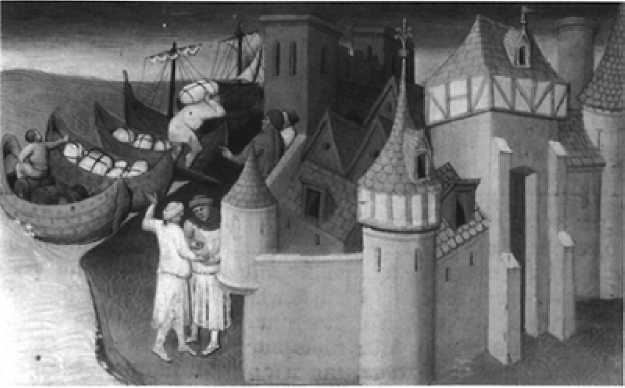. During the Middle Ages, a major commodity of French commerce was wool. The clothmanufacturing industry that had developed in Flanders, Artois, and Picardy had by the 12th century outstripped domestic supplies to meet its needs, and purchasing of English wool had begun. The principal merchants in the 12th century and much of the 13th were the Flemings, who bought the output of monastic houses and that of the laity. It was at times a simple transaction of money for wool. Frequently, wool was purchased by contract, money being advanced for future delivery. Some of the merchants were independent traders; others were agents of major wool towns commissioned to buy wools to meet the towns’ needs.
A conflict begun in 1270 between the kings of England, Henry III and Edward I, and Marguerite, countess of Flanders, contributed to the undermining of Flemish dominance in the traffic of English wool. Hostilities lasted for five years, but even peace in 1275 did not end strained relations between the rulers. Reparations sought by aggrieved merchants of both sides for goods seized during the conflict occasioned coolness between Edward I and Gui, Marguerite’s successor, and brought intermittent in-

English wool arrived regularly by ship to supply the textile industry of northern France. B. N. fr. 2810, fol. 86v. Courtesy of the Bibliotheque Nationale, Paris.
Terruptions of trade by the English king to pressure the count to make promised payments. A serious break between England and Flanders occurred in 1304, when Edward I agreed to help Philip IV in his war against Flanders. The response of the Flemings was to give aid to Scotland, then at war with England. This resulted in the devising of a method to prevent the Flemish merchants from direct access to English wool. A compulsory staple (exclusive market for English wool) came into being in 1313. A cross-Channel town was designated in which all wool shipped from England to the Low Countries had to be marketed. The staple was variously at Saint-Omer in Artois and Antwerp in Brabant, being located in Flanders at Bruges only in 1325. The sharp decline in the role of Flemish merchants in its wool trade with England did not result from the staple. Edward II was generous in his exceptions, even giving a license to all merchants of Ypres to buy wool in England. The decline that began with the conflict that occurred from 1270 to 1275 grew sharper when the Flemings lost their contacts with English monastic houses and conditions in England became unsettled. Into their places stepped the Italians, the English, and members of the Hanseatic League. Despite their declining role, Flemings still traded in England, but in far fewer numbers. It was also true that for much of the 14th century Flemish ship owners still carried the bulk of the wool exported from England. Though Flanders had the dominant role, it was not the only French region from which merchants came. Picardy sent frequent buyers to England. The merchants of the southern city of Cahors had a particularly large share in shipping wool from the major eastern ports of England and importing wool for the clothiers of Toulouse. In addition, the source of wool for France changed by the 15th century. Far fewer sacks of raw wool came from England as the English developed their own cloth for export; Germany and, most importantly for Flanders, Spain, replaced England as suppliers.
Robert L. Baker
[See also: TEXTILES; TRADE ROUTES]
Carus-Wilson, Eleanora. Medieval Merchant Venturers: Collected Studies. London: Methuen,
1954.
Endrei, Walter. “Changements dans la productivite lainiere au moyen age.” Annales: Economies,
Societes, Civilisations 26 (1971):1291-99.
Espinas, Georges La draperie dans la Flandre frangaise au moyen age. 2 vols. Paris: Picard, 1923. Poerck, Guy de. La draperie medievale en Flandre et en Artois, 3 vols. Bruges: De Tempel, 1951.




 World History
World History









